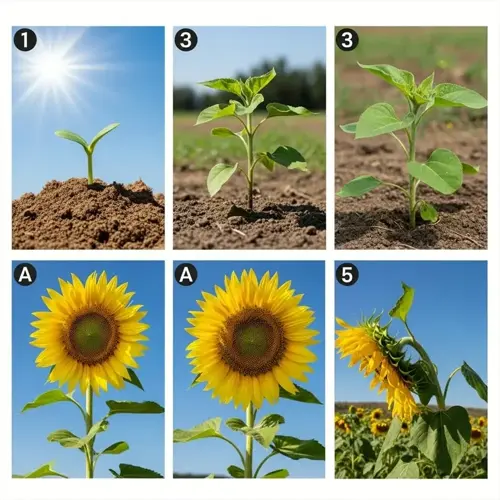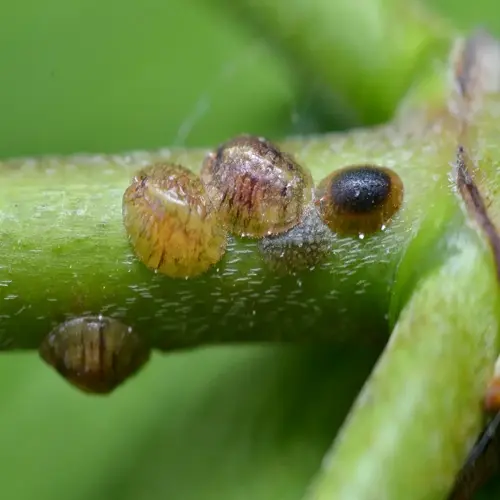Comprehensive Pest Control Solutions Explained

Written by
Nguyen Minh
Reviewed by
Prof. Martin Thorne, Ph.D.Integrated pest control solutions combine physical, biological and chemical methods effectively
Biological controls utilize natural predators for eco-friendly pest management
Chemical pesticides require precise application to prevent environmental damage
Regular monitoring determines action thresholds for timely interventions
Eco-innovations like drone systems enable precise targeted treatments
Professional consultation resolves severe infestations beyond DIY capabilities
Article Navigation
Whether managing a house, a business, or a farm, effective pest control solutions will be necessary. They prevent damage to property and affect health. Modern methods have stringent requirements for safety programs and technology. I have seen for myself how they protect the crops and families they serve. They are effective in reducing the dangers. You can see that these methods are trustworthy for reliability purposes.
This book provides information on various pests and their control systems. You will learn that pests are insects, rodents, and other invaders. We will cover biological control, chemical control, and physical control methods. Environmental responsibility is the cornerstone of every pest control solution. I strive to provide you with pest control systems that are founded on caring for nature while eliminating infestations. Your lives can be free of pest problems and safe. Our earth deserves this kind of thoughtfulness.
Physical and Mechanical Controls
Exclusion techniques are the basis for pest prevention. Seal cracks in walls, place sweeps in doors, and add mesh screens on windows. These physical barriers are in place to prevent insects from entering. I recommend constant structural inspections. Locate possible entry points. The earlier you find them, the less expensive the infestation will be. This is the intelligent first defense.
Trapping is a targeted approach to specific pest invaders. Snap traps are best suited for rodents, pheromone traps are ideal for insects, and light traps are excellent for flies. Each mechanism takes advantage of certain pest behavior. I often have glue boards that catch spiders and live traps that humanely relocate squirrels. You want to set the traps along active paths. Best results come from checking them weekly.
These eco-friendly applications meet the needs of environmentalists, as they involve no contact with chemicals and no environmental pollution. Your children and pets are safe. The mechanical controls are also not damaging to either beneficial insects or earthworms. The writer is fond of these methods for the kitchen and children's rooms. They take care of cleaning the traps and changing necessary seals. A regular attention, however, must be paid to their upkeep to have the value of continuity in birth control.
Cracks and Crevices
- Seal gaps wider than 1/8 inch with silicone caulk
- Install door sweeps to block 1/2 inch rodent entry points
- Apply steel wool packed into openings for gnaw-resistant barriers
- Use copper mesh for permanent gap sealing in masonry
- Check seal integrity quarterly with smoke pencil tests
- Reapply sealants after extreme temperature fluctuations
Ventilation and Utility Openings
- Cover attic vents with 1/4 inch hardware cloth screening
- Install chimney caps with stainless steel mesh protection
- Seal pipe penetrations using rubber gaskets or expandable foam
- Apply weather stripping around windows and exterior doors
- Inspect vent covers seasonally for corrosion damage
- Use foam backer rods for gaps exceeding 1 inch width
Foundation and Ground-Level
- Install concrete aprons around building perimeters
- Apply mortar to seal gaps in brickwork and stone foundations
- Use gravel barriers to deter burrowing rodents near structures
- Implement French drains to redirect water and eliminate habitats
- Maintain 6-inch clearance between soil and wooden structures
- Apply bentonite clay slurry to seal underground tunnels
Roof and Eaves
- Seal roof valleys with waterproof flashing tape
- Install bird spikes on ledges and roof edges
- Apply soffit vents with integrated pest screens
- Repair damaged shingles to eliminate nesting cavities
- Install gutter guards to prevent organic debris accumulation
- Inspect roof penetrations after heavy rainfall events
Landscape Interfaces
- Maintain 18-inch clearance between vegetation and structures
- Install underground rodent barriers using metal sheeting
- Use gravel beds instead of mulch near foundations
- Implement physical root barriers for invasive plants
- Prune tree branches maintaining 5-foot clearance from roofs
- Create 3-foot wide stone perimeters around building foundations

Heat Treatment Systems
- Industrial heaters raise temperatures to 120°F (49°C)
- Effective against bed bugs in all life stages
- Requires 6-8 hour treatment periods for full penetration
- Specialized equipment needed for whole-room applications
- Consumes 15-20 kW per 100 sq ft (9.3 sq m) of space
- Not suitable for buildings with heat-sensitive electronics

Vacuum Removal Devices
- HEPA-filter vacuums capture spiders and flea adults
- Wet/dry vacuums remove nests from wall voids and attics
- Portable units with extension wands for difficult areas
- Essential for immediate reduction of visible infestations
- Require filter changes after 15-20 hours of operation
- Operate at 65-75 dB noise levels during use

Mechanical Harvesters
- Used in agriculture for large-scale pest removal
- Operates at 5-8 mph (8-13 km/h) for field coverage
- Collects insects from crops without chemical residues
- Requires daily cleaning to maintain efficiency
- Covers 5-8 acres (2-3.2 ha) per operational day
- Uses 5-7 gallon (19-26 liter) fuel per work shift

Pest-Proof Storage Containers
- Airtight seals prevent pantry pest access
- Constructed with thick plastic or glass materials
- Common sizes: 32 oz (946 ml) to 5 gallon (19 liter)
- Essential for grain and dry goods protection
- Withstand pressure up to 50 psi (345 kPa)
- Maintain freshness for 6-12 months when sealed properly
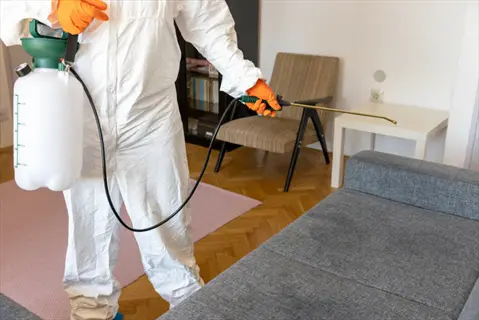
Barrier Sprays
- Creates 12-24 inch protective bands around structures
- Reapplication needed after 0.5 inch (12.7 mm) rainfall
- Forms physical repellent layer on surfaces
- Non-toxic formulas safe for garden areas
- Application rate: 1 gallon per 250 sq ft (23 sq m)
- Dries within 30-45 minutes in optimal conditions
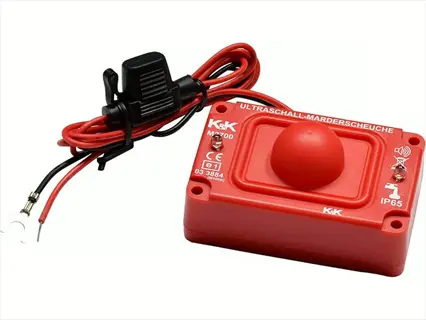
Ultrasonic Repellers
- Emits 20-60 kHz frequencies to deter rodents
- Covers areas up to 1,200 sq ft (111 sq m)
- Requires unobstructed placement for maximum effectiveness
- Limited impact on insect populations
- Operates at 0.5-1.5 watts power consumption
- Effective range decreases by 50% through walls

Bird Netting Systems
- Mesh sizes: 0.75-2 inch (19-51 mm) for different species
- UV-stabilized polyethylene withstands 5+ years outdoor use
- Installation requires tensioning at 10-15 lb (4.5-6.8 kg) force
- Prevents roosting on ledges and agricultural crops
- Wind load tolerance up to 80 mph (129 km/h)
- Installation spacing: posts every 10-15 ft (3-4.5 m)
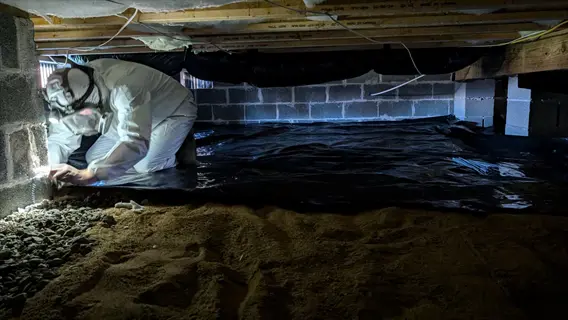
Crawl Space Encapsulation
- 20 mil vapor barriers seal ground moisture sources
- Reduces humidity below 50% to eliminate pest habitats
- Includes sealing vents with automated humidity controls
- Long-term solution for subterranean termite prevention
- R-value insulation equivalent to 3-4 inch (7.6-10 cm) fiberglass
- Reduces energy costs by 10-18% in climate-controlled spaces

Pest-Repelling Landscaping
- Mint deters ants within 3-5 ft (0.9-1.5 m) radius
- Marigolds repel nematodes in vegetable gardens
- Lavender creates mosquito barriers around patios
- Requires seasonal replanting for continuous protection
- Plant density: 1 per 4 sq ft (0.37 sq m) for full coverage
- Essential oil concentration peaks at 2-3 years growth

Structural Modification Tools
- Angle grinder for creating pest-deterring edges
- Foam applicators for gap sealing in irregular spaces
- Moisture meters to identify high-humidity problem areas
- Thermal cameras detect hidden pest activity zones
- Concrete saws for creating rodent-proof foundations
- Laser levels ensure precise barrier installations
Biological Control Techniques
The natural predator-prey relationship is an effective means of pest control that provides balance without using chemicals. Release ladybugs for aphid control or parasitic wasps for caterpillars. Nature's defenders keep the balance of nature with no chemical effect. I have introduced lacewings into gardens that were previously a complete failure, and they have gradually grown into splendid, thriving gardens. They clean hundreds of pests out every week. This is nature's own defense system, and it works all right.
Microbials such as Bacillus thuringiensis can kill certain pests very precisely. These bacteria can be applied to leaves for caterpillar control, or to the soil in the case of root weevils. They will infect only certain insects, leaving beneficial ones unharmed. I would recommend them specifically for vegetable patches. These materials will quickly dissolve naturally in a matter of days.
Improve habitats with nectar-bearing plants and water. Plant marigolds to bring in hoverflies or add bee hotels. These spots protect beneficial insects all year. My clients see an increase in predator populations within months. Maintain these spots constantly. Avoid using pesticides in the area to prevent harming your friends.
Biological controls take time. You can expect to see results in 2-4 weeks. When using nematodes, apply them before the pest population reaches its peak. Apply microbial agents every 7-10 days initially. I take status with sticky traps. Success requires continual monitoring. Full ecosystem balance generally takes the time of a growing season to establish.
Ladybug Colonies
- Release 1,500-2,000 adults per acre for aphid control
- Optimal temperature range: 60-85°F (16-29°C)
- Provide water sources with sponge pads for hydration
- Plant companion flowers like dill and yarrow for habitat
- Effective against 50+ aphid species in vegetable gardens
- Requires 3-4 releases per growing season
Parasitic Wasps
- Target caterpillars, flies, and beetle larvae
- Release rates: 5,000-10,000 wasps per hectare
- Use emergence boxes for controlled distribution
- Maintain nectar plants for adult sustenance
- 70-90% parasitization rates in greenhouse settings
- Avoid broad-spectrum pesticides during application
Predatory Nematodes
- Steinernema species for soil-dwelling pests
- Apply through irrigation at 1 million per 100 sq ft
- Soil temperature must exceed 55°F (13°C)
- Effective against fungus gnats and root weevils
- Requires moist soil conditions for mobility
- Reapply after heavy rainfall exceeding 1 inch
Lacewing Larvae
- Consume 100-200 aphids per larva during development
- Release eggs on cards near infestation sites
- Optimal humidity: 60-70% for survival rates
- Use artificial honeydew supplements in dry conditions
- Effective in orchards and ornamental plants
- Protect from ants that disrupt feeding patterns
Praying Mantis
- Deploy oothecae (egg cases) in early spring
- Each case yields 100-200 nymphs
- Generalist predators for moths and beetles
- Require tall grasses for ambush hunting
- Install protective cages against bird predation
- Effective coverage: 1 case per 5,000 sq ft

Beneficial Nematodes
- Apply at 1 million per 100 sq ft (9.3 sq m)
- Effective against soil-dwelling pests like grubs
- Require soil temperatures above 55°F (13°C)
- Water-activated movement to seek host insects
- Reapply after heavy rainfall exceeding 1 inch (25 mm)
- Safe for earthworms and non-target organisms
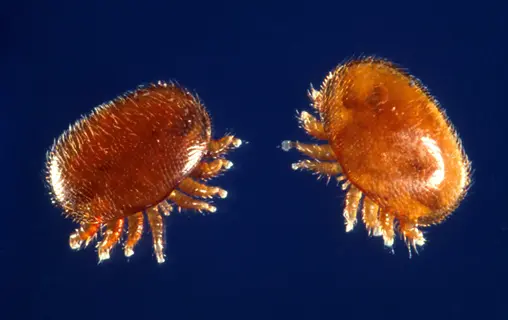
Predatory Mites
- Phytoseiulus persimilis for spider mite control
- Release 2-10 mites per infested plant
- Optimal humidity: 60-70% for reproduction
- Avoid applications when temperatures exceed 90°F (32°C)
- Provide pollen sources as alternative food
- Establishment requires 3-4 weeks for population growth
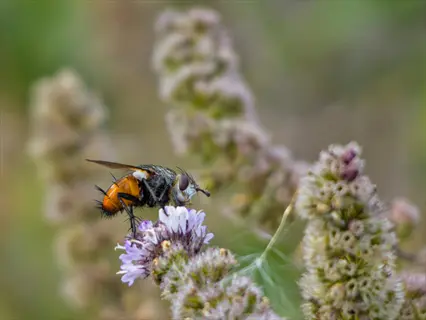
Parasitoid Flies
- Target caterpillars and beetle larvae
- Install overwintering shelters for adults
- Plant umbel flowers for nectar sources
- Effective in orchards and field crops
- Avoid broad-spectrum insecticides
- Each female parasitizes 100+ hosts monthly
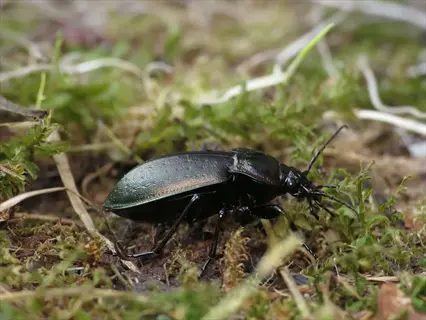
Ground Beetles
- Carabid species for slug and snail control
- Create beetle banks with perennial grasses
- Provide dark, moist shelters under stones
- Effective coverage: 10 beetles per sq yd
- Avoid soil disturbance in breeding areas
- Consume 50x body weight in pests nightly
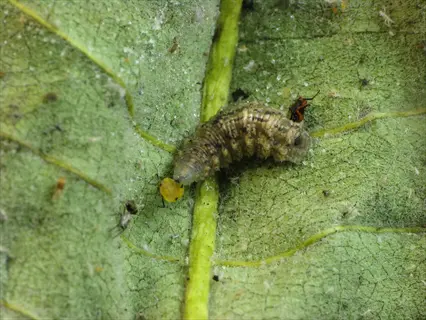
Hoverflies
- Larvae consume up to 400 aphids each
- Plant yellow and white flowers for attraction
- Establish near greenhouses and gardens
- Require shallow water sources for reproduction
- Avoid pesticide drift during bloom periods
- Effective range: 150 ft (46 m) from nectar sources

Minute Pirate Bugs
- Target thrips, mites, and small caterpillars
- Release 1-2 per sq ft in infested areas
- Optimal temperature: 70-80°F (21-27°C)
- Provide continuous pollen sources
- Establish permanent populations in perennial crops
- Each adult consumes 20+ pests daily
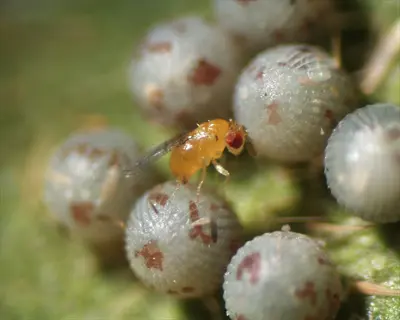
Trichogramma Wasps
- Parasitize moth and butterfly eggs
- Release 5,000-200,000 per acre weekly
- Use carrier materials for even distribution
- Effective against corn earworm and cabbage looper
- Require 60-80% humidity for parasitization
- 90% egg destruction in monitored fields
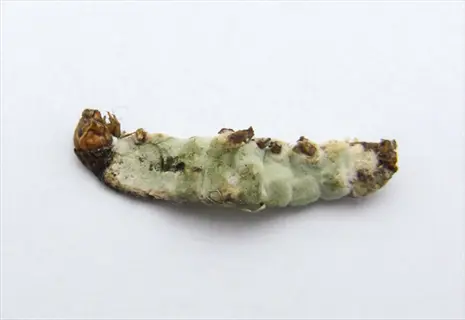
Entomopathogenic Fungi
- Apply as wettable powder formulations
- Effective within 3-7 days of application
- Use at rates of 1 oz per gallon (30 ml per 3.8 L)
- Require high humidity for spore germination
- Reapply after UV degradation in 5-7 days
- Safe for beneficial insects when dry
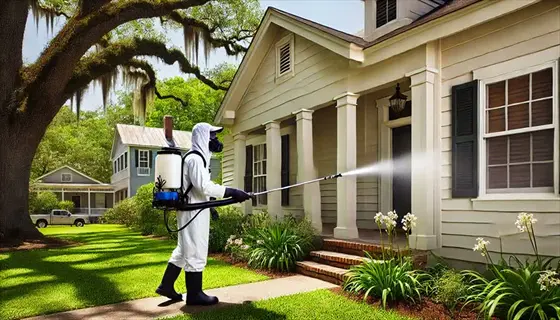
Bacterial Insecticides
- Bacillus thuringiensis var. kurstaki for caterpillars
- Apply at 1-4 tsp per gallon (5-20 ml per 3.8 L)
- Effective for 4-7 days after application
- Target young larvae for best results
- Reapply after rainfall exceeding 0.5 inch (13 mm)
- UV-protective additives extend field life
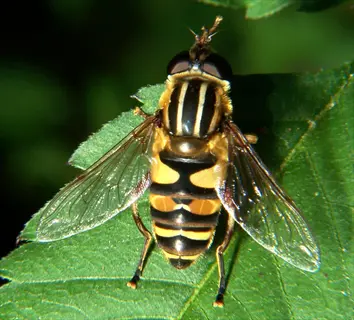
Habitat Enhancement
- Establish 5-10% of area as insectary strips
- Plant buckwheat, alyssum, and phacelia species
- Provide overwintering sites with rock piles
- Maintain permanent ground cover in orchards
- Install artificial nesting sites for solitary bees
- Increases beneficial populations by 300% in 2 seasons
Chemical Pest Control Solutions
Chemical insecticides are classified according to their composition. The pyrethroids affect the nervous system, neonicotinoids act systemically through the plant, organophosphates inhibit enzymes, and carbamates cause only reversible damage. Insect growth regulators affect development. Each type of insecticide has its own specific uses in controlling particular insects. My choice of formulations is based on the biology of the species I am working on.
Choose applicators carefully for any given job and use hand sprayers for surgical applications in the garden. Use backpack foggers on the lawn for mosquito control. Granular spreaders are most effective in lawn situations. I suggest baiting injectors for termite colonies. Match up the tools used to the size and location of the infestation.
Follow FURO regulations meticulously. Use gloves, masks, and protective clothing as needed. Adhere to re-entry times specified on labels. There is no such thing as safety ignored. Exposure is avoided by safe procedure. Chemical burns can be avoided by using proper mixing techniques. Products should be stored in a protected cabinet out of the reach of children.
Reduce impact to the environment: Use targeted means rather than blanket spraying. Avoid application of herbicides near water bodies. Apply in calm weather. I try to apply treatments before rain to avoid run-off and dispose of containers properly at hazardous waste sites. All of these practices help to protect the environment.
Pyrethroids
- Synthetic derivatives of chrysanthemum flower compounds
- Fast-acting neurotoxins disrupting sodium channels
- Common products: bifenthrin, permethrin, cypermethrin
- Effective against ants, cockroaches, and mosquitoes
- Residual activity: 30-90 days depending on formulation
- Toxicity class: II (moderate) requiring PPE during application
Neonicotinoids
- Systemic insecticides absorbed by plant tissues
- Target nicotinic acetylcholine receptors in insects
- Common products: imidacloprid, thiamethoxam, clothianidin
- Specialized for sap-feeding pests like aphids and whiteflies
- Application methods: soil drench, trunk injection, seed treatment
- Environmental concern: high toxicity to pollinators at sublethal doses
Organophosphates
- Inhibit acetylcholinesterase enzyme in nervous systems
- Broad-spectrum control with rapid knockdown effect
- Common products: malathion, chlorpyrifos, diazinon
- Used in agriculture for caterpillar and beetle management
- Re-entry interval: 24-72 hours depending on formulation
- Require certified applicator training due to high toxicity
Carbamates
- Reversible acetylcholinesterase inhibitors
- Moderate persistence with contact and stomach action
- Common products: carbaryl, methomyl, aldicarb
- Effective against lawn grubs and ornamental pests
- Application rates: 0.5-2 lb per acre (0.56-2.24 kg per hectare)
- Pre-harvest intervals: 7-14 days for food crops
Insect Growth Regulators
- Disrupt molting and reproductive development
- Chitin synthesis inhibitors and juvenile hormone mimics
- Common products: methoprene, pyriproxyfen, diflubenzuron
- Used in combination with adulticides for colony elimination
- Application rates: 0.1-0.5% concentration for sprays
- Low mammalian toxicity with minimal environmental impact
- Slow-acting: requires 3-7 days for full effect
Integrated Pest Management
Integrated Pest Management (IPM) is a combination of strategies used to maintain a balance of the ecosystem. IPM uses prevention, monitoring, and targeted interventions. Relying less on chemicals, this method tends to respect and support the natural cycles. I have successfully implemented IPM on farms and in homes. Through this system, a sustainable solution to pest problems is created.
Implement monitoring protocols like weekly inspections and traps. Utilize moth pheromone lures and fly sticky cards. Pest activity patterns are kept in detailed logs. I track population trends using degree-day models. This alerts me to potential infestation dangers before it becomes critical.
Action thresholds should be set based on the risks. Since vegetable crops can tolerate fewer pests than ornamental gardens, public health threats require immediate attention. I customize thresholds for each client's situation to avoid unnecessary treatments. You conserve resources.
IPM provides both economic and environmental benefits. Less pesticide means less cost and also better pollination. Healthier plants provide better market returns. I calculate annually the savings from the damage averted. Such techniques also offer long-range maintenance of soil. You are investing in a balanced ecosystem.
Prevention First
- Design landscapes to discourage pest establishment
- Select pest-resistant plant varieties and cultivars
- Implement crop rotation in agricultural systems
- Maintain structural integrity to block entry points
- Ensure proper sanitation and waste management
- Use certified disease-free seeds and planting materials
Monitoring Protocols
- Weekly visual inspections during growing seasons
- Deploy pheromone traps for insect population tracking
- Use sticky cards for flying insect quantification
- Maintain digital logs of pest activity patterns
- Implement degree-day (°D) models for development prediction
- Establish baseline data for comparative analysis
Action Thresholds
- Define economic injury levels for each crop-pest system
- Set aesthetic thresholds for ornamental landscapes
- Establish public health standards for disease vectors
- Incorporate beneficial insect preservation metrics
- Develop seasonal adjustment factors for thresholds
- Implement dynamic thresholds based on crop value
Control Selection
- Prioritize mechanical/physical controls initially
- Introduce biological agents before chemical options
- Select targeted pesticides with low non-target impact
- Use insect growth regulators for colony disruption
- Implement mating disruption with pheromone technologies
- Apply spot treatments instead of broad applications
Evaluation System
- Document treatment efficacy through photo monitoring
- Measure pest population reductions quantitatively
- Assess non-target organism impacts post-treatment
- Calculate cost-benefit ratios for control methods
- Conduct annual reviews of threshold adjustments
- Maintain records for regulatory compliance audits
Eco-Friendly and Innovative Solutions
Plant-Based Products provide insect management without synthetic chemistry. Pyrethrum from chrysanthemums quickly incapacitates flies. Neem oil affects pest life cycles naturally. I use garlic-chili sprays to deter aphids on vegetables. They leave no toxic residues. You effectively protect beneficial insects.
Technologies that are energy-efficient will minimize one's environmental footprint, including traps that are solar powered. Some of them have smart sensors that detect pest activity with nearly the same amount of electricity needed. Drone sprayers apply a spray to many acres with great precision by utilizing GPS mapping. I have devices in the UV light range that consume less energy than light bulbs and run for several months on small batteries. You will have a significant reduction in energy costs.
Look for certifying standards such as those of OMRI or EcoCert labels. These indicate that products meet stringent non-toxic standards. Certified products undergo independent safety tests. I recommend checking certification databases before making purchases. By doing so, you will check the validity of claims about sustainability. You will easily avoid falling into the greenwashing traps.
Eco-methods "cost-effectively travel" in time. Although initial costs may be higher, repeated charges are reduced, resulting in savings. My clients have saved 30% per year compared to normal spraying costs. Consider also the money saved, as there are no costs associated with environmental damage. Over time, the health of the soil improves, resulting in increased crop yields. In this way, you gain both an eco-return and an economic return.
Botanical Insecticides
- Pyrethrum extracted from chrysanthemum flowers
- Neem oil disrupting insect hormone systems
- Citrus oil extracts dissolving insect exoskeletons
- Application rates: 2-4 oz per gallon (59-118 ml per 3.8 L)
- Reapply after 0.5 inch (13 mm) rainfall
- Certified organic by OMRI and USDA
Diatomaceous Earth
- Food-grade silica powder dehydrating insects
- Effective against ants, cockroaches, and bed bugs
- Apply thin dust layers in dry conditions
- Reapply after cleaning or humidity above 60%
- Use mask during application to prevent inhalation
- Non-toxic to mammals and beneficial insects
Beneficial Habitat Creation
- Plant nectar sources for predatory insects
- Install insect hotels for solitary bees
- Maintain water sources for beneficial wasps
- Preserve 10% uncultivated areas for natural predators
- Avoid pesticide drift during bloom periods
- Increases predation rates by 40-60%
Fermented Solutions
- Garlic and chili pepper repellent sprays
- Fermentation process enhances bioactive compounds
- Dilution ratio: 1:10 with water for foliar application
- Effective against soft-bodied insects like aphids
- Reapply every 5-7 days during infestations
- Zero chemical residue on edible crops
Physical Barriers
- Floating row covers for vegetable protection
- Copper tape barriers deterring slugs
- UV-resistant netting against birds and insects
- Installation spacing: posts every 10 ft (3 m)
- Maintain tension at 15-20 lb (6.8-9 kg) force
- 5+ year lifespan with proper maintenance
5 Common Myths
Ultrasonic pest repellent tools will drive all kinds of insects and rodents from homes through the means of sound waves.
Scientific experiments show that the effectiveness of the ultrasonic devices is limited to a few kinds of rodents which are in the direct line of sight, and they are ineffective against insects on account of the difference between the hearing ranges. The high frequency sound waves could not penetrate the walls or furinture in homes. It is a peculiarity of pests that they become accustomed to the sound in a few days. If we depend upon these devices, there is at least the opportunity for the pest to increase in his bad habits, while we feel secure in regard to our extermination. It is important, therefore, that pest assessments should be made by men in charge of the professional department and wprk in unison with the integrated methods used in extermination.
A clean house ensures complete protection from any form of pest invasion regardless of time of the year or location.
Pests mainly enter buildings for shelter and water not for food which means even a clean house can suffer infestations from cracks in the foundation or utilities. Rats for instance invade seeking warmth in cold months and ants seek moisture in dry. Cleanliness then in itself does not accomplish much. Structural weaknesses like holes in the roof or damp basements create entry points that are not aided by cleanliness. Total prevention requires sealed entry points, moisture control and periodic exams beyond mere sanitation.
Natural pest control solutions like essential oils are always completely safe for people, pets, and the environment.
Undiluted essential oils can cause skin irritation in humans and toxicity to pets if ingested, while excessive applications harm beneficial insects and contaminate waterways through runoff. Some plant-based compounds like pyrethrum trigger allergic reactions in sensitive individuals, and improper concentrations damage plant tissues. Environmental impacts include disrupting aquatic ecosystems when rain washes oils into streams. Always follow dilution guidelines and apply selectively to minimize ecological harm.
Chemical pesticides provide instant and permanent eradication of pest colonies with a single application.
Chemical pesticides kill only the evident individuals and fail to kill the hidden colonies and their eggs hatching several days later, and continued treatment must be made for the complete extermination of the pest. Many pests also become resistant after repeated use of the chemicals, which lessens their effect over a period of time. Integrated procedures of living-excluding things, traps and growth regulators are necessary in order to accomplish permanent results. Relying entirely upon the chemicals generally serves to increase the pests we would destroy because the enemies of the pest are killed and the remaining survivors develop greater vigor.
Home pest control methods using household products are just as effective as the professional services used for serious infestations.
Products available over the counter give treatment for only the surface symptoms and do not deal with the root of the problem, such as hidden nests or structural points of entry, so the pests return. Experts use thermal imaging and injection systems and specific strategies geared to specific pest species which the layman has no access to; they use materials commercially prepared that will last months instead of days. The attempt to use home treatment for termites or bedbugs will only drive the infestation deeper into the dwellings and lead to increased damage and increased costs in the long run. The expert knows at least three other ways of dealing with specific pests which guarantee complete solution to the problem with follow-ups and warranties.
Conclusion
Successful pest management combines barriers, biological controls, and precision chemical applications. This results in decreased risks coupled with maximum results. I have seen properties transformed through this balanced, integrated approach. You gain lasting protection without endangering homeowners' ecosystems.
Environmental stewardship involves selecting several breakthroughs, such as solar-powered traps and botanical sprays, and those changes would drastically whittle down the carbon footprint. I continue to deliver OMRI-certified products to our clients. Consumers make conscious decisions to impact the health of soil and waterways positively.
For extremely infested areas, professional help is required. Certified technicians identify hidden nests and structural weaknesses. They also have access to commercial-grade products not available to homeowners. I recommend these consultations for treating termites or bed bugs. You will save a great deal of money by detecting a problem early, rather than allowing it to cause detrimental damage.
Ongoing monitoring via weekly checks and traps continues to be a basic part of good practice. Seasonal tracking of pest activity patterns can be insightful. I document everything in my maintenance logs. This level of diligence allows for early detection of issues. You are proactive in ensuring buildings are pest-free.
External Sources
Frequently Asked Questions
What is pest control?
Pest control involves managing and eliminating unwanted organisms that damage property, spread disease, or disrupt ecosystems. Methods range from physical barriers and biological controls to chemical treatments and integrated approaches. Professionals assess infestations to determine the most effective solution while minimizing environmental impact.
What are the main pest control methods?
Primary pest management strategies include:
- Physical controls like sealing entry points and traps
- Biological methods using natural predators
- Chemical treatments with targeted pesticides
- Integrated approaches combining multiple techniques
Is professional pest control necessary?
Professional intervention becomes essential for persistent infestations, structural damage risks, or health-threatening situations. Experts possess specialized equipment, commercial-grade solutions, and species-specific knowledge that DIY methods typically lack, ensuring complete eradication and preventing recurring problems.
How soon can I re-enter after treatment?
Re-entry times vary by treatment type but typically require waiting until surfaces dry. For chemical applications, ventilate areas thoroughly before returning. Always follow technician instructions regarding specific waiting periods to ensure safety and treatment effectiveness.
Are natural pest solutions effective?
Botanical and mechanical alternatives provide viable options with proper implementation. Essential oils, diatomaceous earth, and barrier methods work against specific pests when correctly applied. However, severe infestations often require professional-grade solutions for complete resolution.
What is integrated pest management?
Integrated Pest Management combines prevention, monitoring, and targeted interventions. This systematic approach uses multiple strategies:
- Regular inspections to detect early signs
- Biological controls before chemicals
- Action thresholds determining intervention needs
- Continuous evaluation of effectiveness
Can pests return after treatment?
Reinfestations occur without proper follow-up and prevention. Professional services include monitoring visits and exclusion techniques to maintain pest-free environments. Ongoing maintenance like sealing entry points and eliminating attractants significantly reduces recurrence risks.
What makes eco-friendly pest control different?
Sustainable approaches prioritize environmental safety through:
- Plant-derived compounds instead of synthetics
- Habitat enhancement for natural predators
- Precision application minimizing collateral damage
- Innovations like drone-targeted treatments
How do I choose a pest control provider?
Select licensed professionals with species-specific expertise. Evaluate their approach to integrated management, safety protocols, and environmental considerations. Reputable companies provide detailed treatment plans and follow-up guarantees.
What are common pest control misconceptions?
Key myths include:
- Ultrasonic devices universally repel pests
- Immaculate cleanliness prevents all infestations
- Single chemical treatments guarantee permanent results
- DIY methods match professional effectiveness
